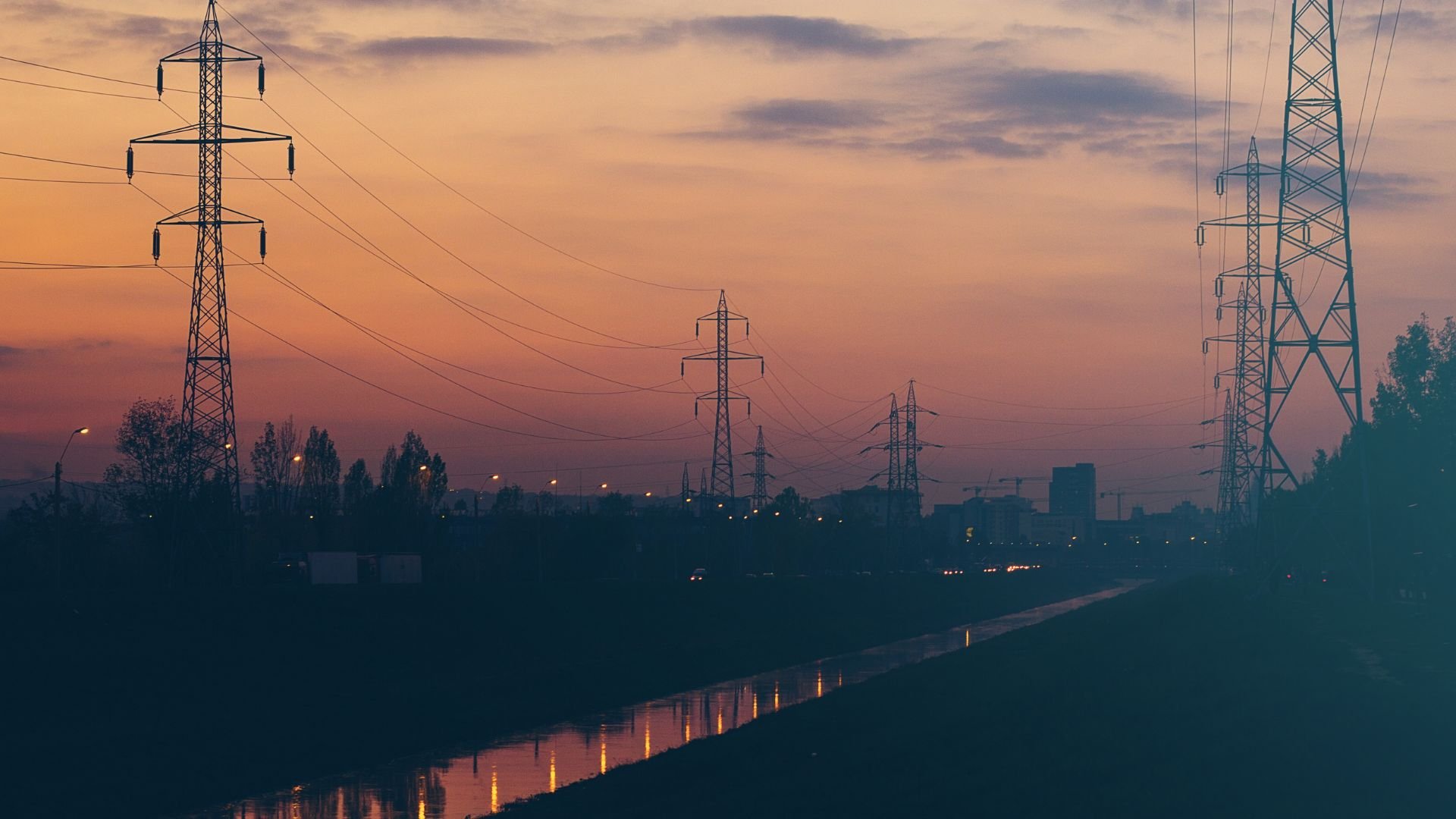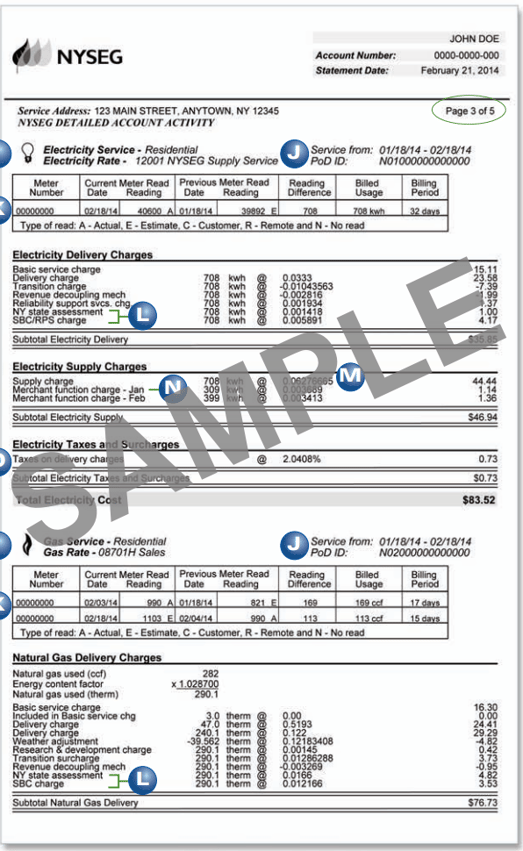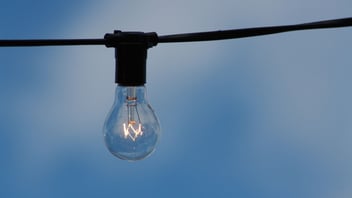Understanding Your New York Utility Bill

If you’re a commercial or industrial customer in our New York service area, you’re likely getting your utility bill from several companies, but we’re going to address two utility companies: New York State Electric and Gas (NYSEG) and the Rochester Gas and Electric (RG&E). This article will explain your monthly utility bills from both companies, break down what you’re paying for, and highlight where you can save. For reference, we’ve spelled out some of the typical language you’ll see on your bill, like the difference between supply and transmission and how to read kilowatt-hours (kWh) on your bill.
Your NYSEG bill includes:
- A 15-digit POD (Point of Delivery) ID number, starting with N01.
- Your account number, account summary, payment activity, current charges, meter reading chart, state assessment, and supply prices.
- Special bill messages for information specific to NYSEG service.
- Your usage chart.
Your RG&E bill, with minor changes, includes:
- A 15-digit POD (Point of Delivery) ID number, starting with R01.
- Your account number, account summary, payment activity, current charges, meter reading chart, state assessment, and supply prices.
- Special bill messages for information specific to RG&E service.
- Your usage chart.
Supply Charges
NYSEG
NYSEG Supply Service consists of variable electricity supply and transition charges, and a fixed delivery charge. Like other utility companies, you can purchase your electricity supply from NYSEG at a variable rate or from another energy service company (ESCO) – we talk all about what an ESCO is and the benefits of using one for supply here. The NYSEG natural gas supply is determined on the last day of the month before. If your billing cycle spans two months, you’ll see two supply charges on your utility bill. Included in your supply charges is a merchant function charge when you purchase your electricity and/or natural gas supply from NYSEG.
RG&E
Your RG&E utility bill will look a lot like an NYSEG one. Everything is the same except for your POD ID. You use your POD ID when shopping for energy suppliers other than RG&E. Like NYSEG, RG&E customers pay a merchant function charge when they purchase their electricity and/or natural gas supply from RG&E.
 NYSEG and RG&E have similar bill formats.
NYSEG and RG&E have similar bill formats.
Delivery Charges
NYSEG
Your delivery charges across all utilities, including NYSEG and RG&E, are predetermined. They can change due to a variety of factors, including seasonality. Utilities have total control over the price of transmission due to the cost of delivering electricity to your business. For NYSEG customers, your delivery charges are on page 3.
Under your delivery charges, you’ll notice a NY state assessment charge and SBC/RPS (System Benefits and Renewable Portfolio Standard) charge on your bill—yes, you’re already paying for renewables like solar energy! The state assessment charge is required by state law, and utilities must collect this rate from all customers for the state’s general fund. SBC/RPS on the other hand funds the NYS Energy Research and Development Authority. SBC/RPS supports energy efficiency programs, like the Energy Efficiency Portfolio Standard, which funds rebates for customers to buy and install high-efficiency energy appliances. It also includes low-income assistance and energy research.
RG&E
RG&E customers have the same delivery charges as NYSEG.
| Key Takeaways |
|
Learn more about your NYSEG utility bill here and your RG&E utility bill here.



